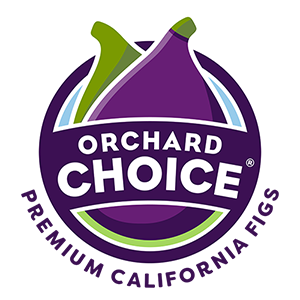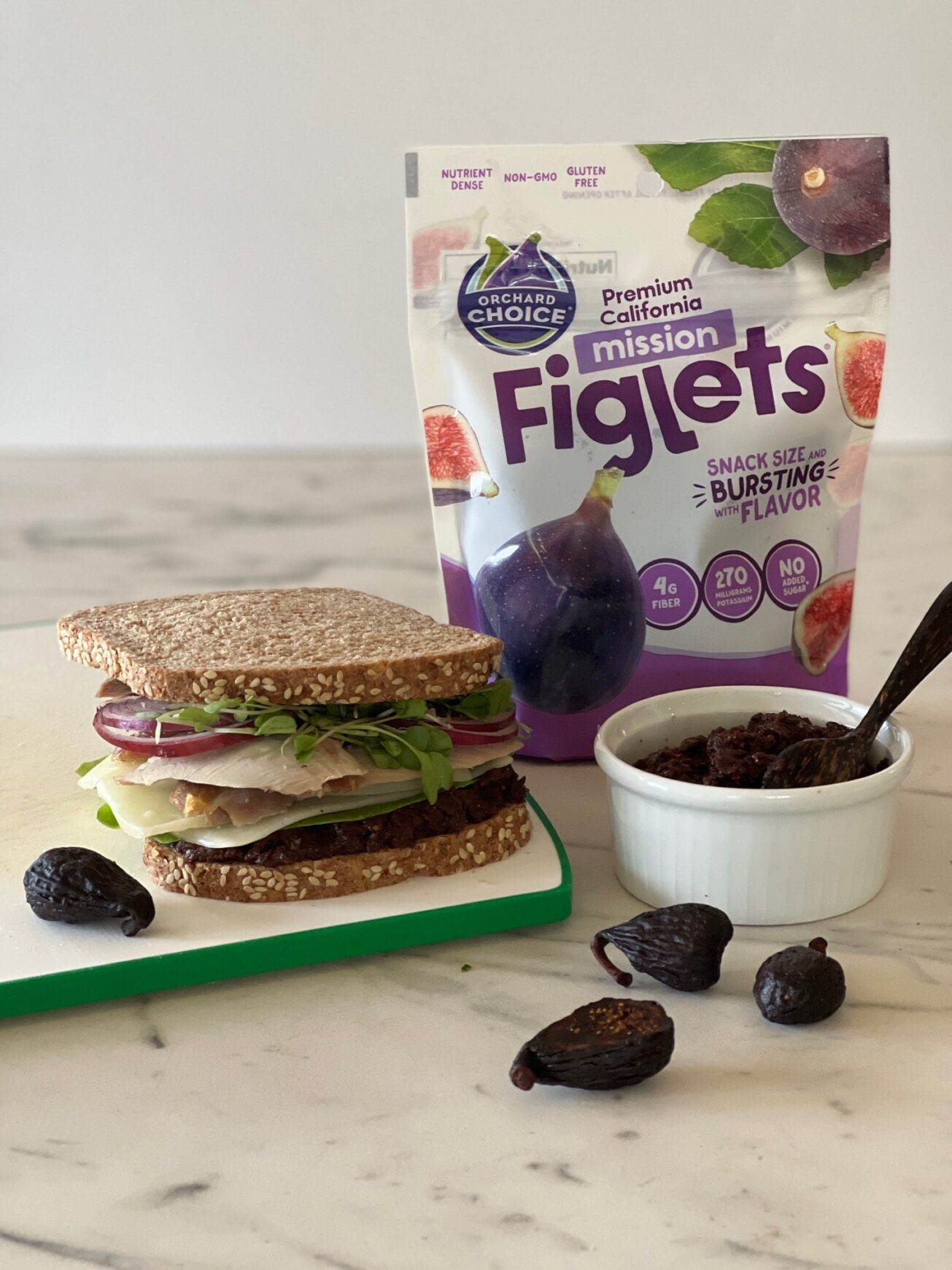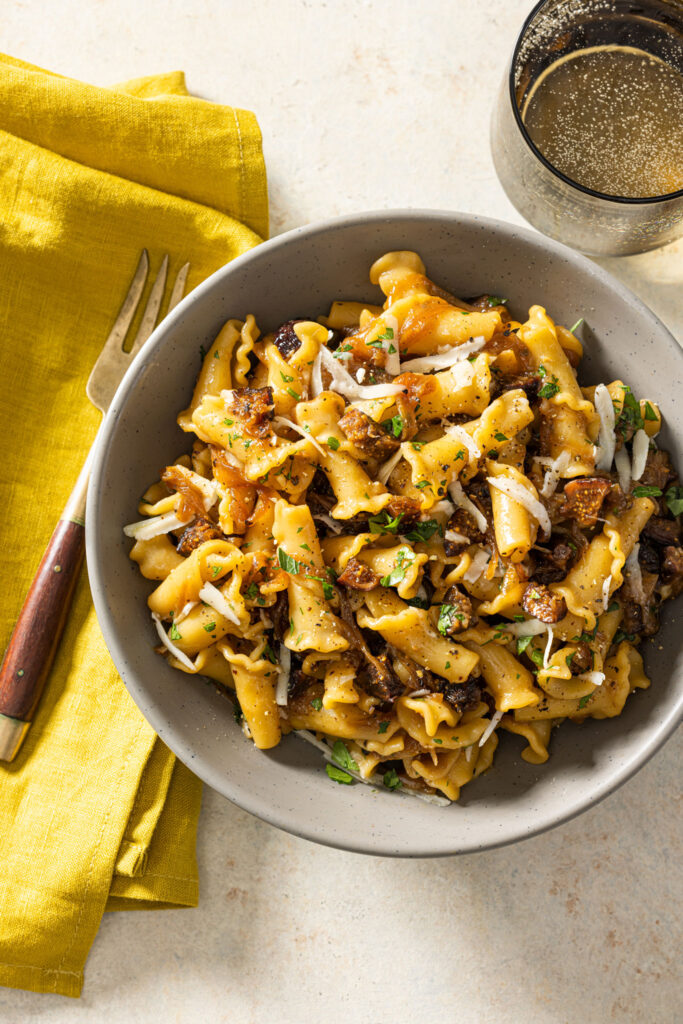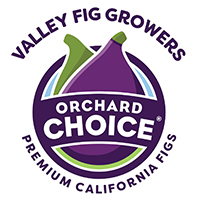You may be thinking, what is tryptophan? Or, you’ve heard about foods high in tryptophan such as turkey which is often blamed for the “I need a nap” feeling after a big Thanksgiving feast. Stay tuned for an explanation – after a brief 411 answering the question I asked, and a chart of tryptophan food sources.
Tryptophan is one of the nine “essential amino acids” or building blocks of protein that must come from the diet for the body to create proteins to build and repair muscles and other cells in the body, including enzymes, hormones, messaging molecules, and more. The other eleven amino acids required to build proteins are “non-essential,” because they can be made in the body. A few are “conditionally essential,” needed in the diet under special circumstances such as during infancy.
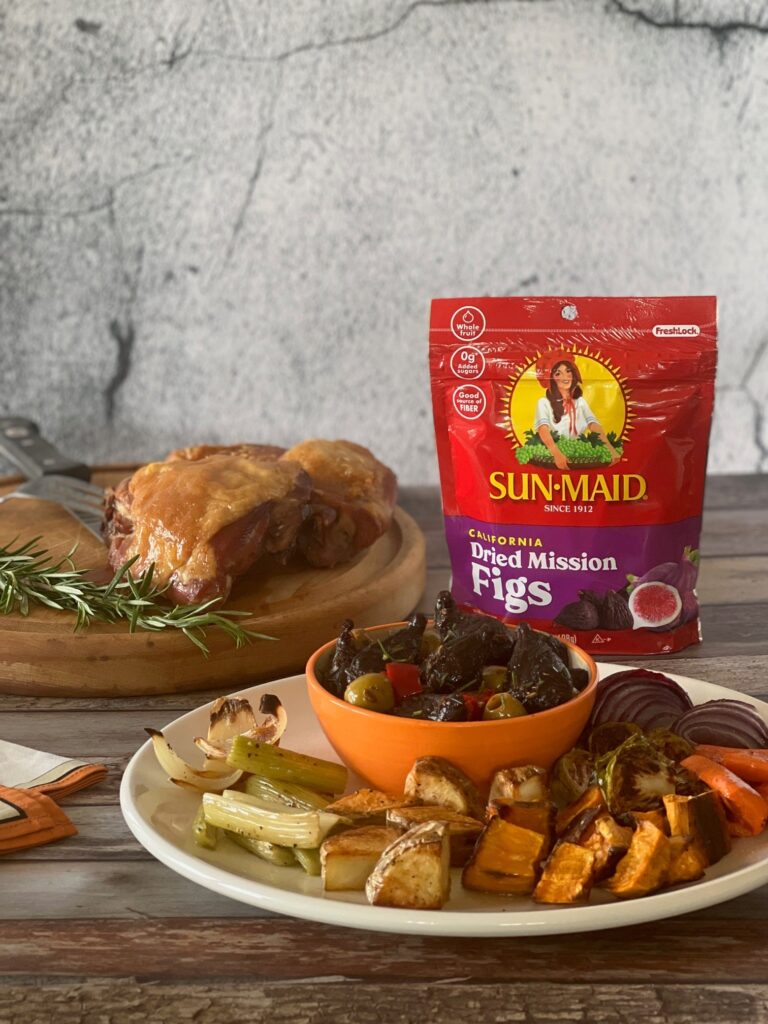
Fun Fact #1: Figs as Tryptophan Food Sources
The protein in California dried figs may not come to mind first when thinking about the nutritional value of figs, but a 40-gram serving has 1 gram of protein which includes about 8 milligrams (mg) of the amino acid tryptophan. It may be a small amount relative to that of other foods, but when you eat figs regularly, small amounts of tryptophan and other nutrients add up. That’s why health experts often recommend a “food first” approach to good nutrition. Whole, minimally processed foods come bundled with a variety of health promoting nutrients, and some are not shown on the nutrition label. Many of these nutrients work in concert to promote health and protect against disease.
Building body cells and tissues is only one role of tryptophan in the body. The liver can use tryptophan to make the essential vitamin niacin (B3) even though it’s easy to get niacin in the diet – it’s in many commonly consumed foods. This is a handy back-up system to ensure adequate niacin which has a variety of important functions, including helping over 400 enzymes carryout key reactions in the body, such as converting food into energy, and making DNA, cholesterol, and fats.
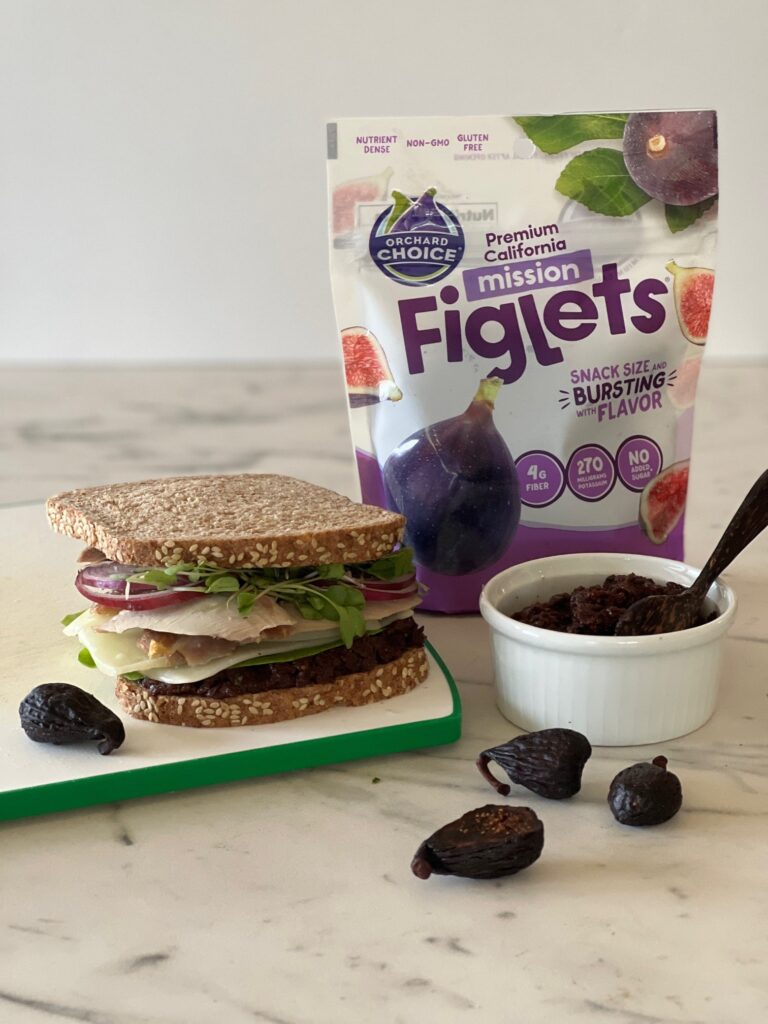
Fun Fact #2: Figs are a Source of Iron and B6
These two nutrients, which, along with riboflavin, are essential co-factors in the conversion of tryptophan to niacin.
The prevalence of stress, anxiety, depression, and lack of sleep (See Box) in society make the role of tryptophan in the production of two other molecules—serotonin and melatonin—hot topics today.
Anxiety, Stress + Sleep
Anxiety is the most common type of mental health disorder today, affecting over 19% of Americans aged 18 and older; depression often accompanies anxiety (10). The latest The Stress in America™ Survey by the American Psychological Association (11) reports that over 80% of Americans report feeling stressed and almost 2/3 grapple with adjusting to post-pandemic changes in their lives.
The relationship between adequate sleep to mental and physical health is well documented. According to the National Sleep Foundation, over 1/3 of U.S. adults sleep less than 7 hours per night, less than the average requirement of 7-9 hours, and up to 30% struggle with chronic Insomnia.
The “Feel Good” Neurotransmitter
Tryptophan is essential to make serotonin, often called the “feel good” neurotransmitter because it plays a role in cognitive function and helps to regulate mood, appetite, sleep, and pain. Melatonin, often called “the sleep hormone” is made from serotonin in the brain’s pineal gland. It has various functions, the best-known being to help regulate the body’s circadian rhythm and synchronize our sleep-wake cycle with night and day.
A whopping 90% of serotonin is made from tryptophan by cells in the lower gastrointestinal (GI) tract and by “good bacteria” that reside there, often referred to as the microbiota. This has led scientists to explore what is called “the gut-brain axis,” the communication system between the GI tract and the nervous system. This “cross-talk” includes nerves, hormones, neurotransmitters such as serotonin, and other metabolites of the microbiota. The gut microbiota has even been called “the brain’s peacekeeper” for its role in mental health and disturbances such as depression, as well as in GI health.

Fun Fact #3: Figs are an Excellent Source of Dietary Fiber
They help “nourish” the microbiota and benefit health in the digestive tract, the cardiovascular system and more. California dried figs have 5 grams of dietary fiber or 20% of the Daily Value per serving.
Circling back to tryptophan-rich turkey. Is it to blame for nodding off after a Thanksgiving feast?
For tryptophan to enter the brain to make serotonin, it must cross the “blood brain barrier.” To do so it competes with several other amino acids for “a ride” on the same transporter protein. After an ordinary meal, a modest amount of tryptophan enters the brain.
After a Thanksgiving feast however, the abundant carbohydrate-rich foods – rolls, stuffing, cranberry sauce, pie – trigger the pancreas to release insulin which promotes the uptake of amino acids (except tryptophan*) and carbohydrates into skeletal muscles, paving a way for more tryptophan to enter the brain.
*Most tryptophan in the bloodstream is bound to albumin so it isn’t shunted into tissues after a carb-rich meal like the amino acids it competes with for entry into the brain.
Another cause of drowsiness is the fact that large meals stretch the GI tract and trigger the parasympathetic nervous system into “rest and digest” mode. It slows the heart rate and blood pressure, shunts blood away from the brain and other tissues to the GI tract, and increases digestive juices.
To sum it up, scientists don’t think turkey is the main culprit in post-feasting sleepiness. After all, as the chart below shows, many foods are rich in tryptophan, and they don’t cause sleepiness.
All this tryptophan talk leads to the question, do I get enough and what are foods high in tryptophan? The Recommended Dietary Intake (RDI) for tryptophan, based on body weight, is 1.8 milligrams (mg) per pound (lb.), so someone who weighs 150 lb. needs about 270 mg daily. As you can see in the chart, tryptophan is widely available in commonly consumed foods so most people meet or exceed their needs.
Foods Containing Tryptophan
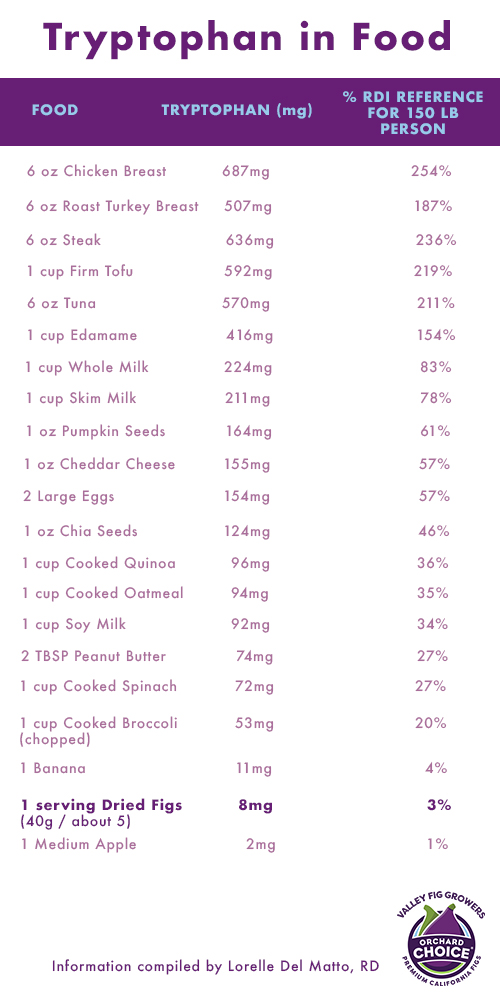
Recipe Ideas for Figs + Tryptophan All-Stars
Check out these recipe ideas that combine California dried figs with other tryptophan food sources. Do you have any favorite foods containing tryptophan?
- Roasted Turkey Thighs + Veggies with Herb Marinated California Mission Figs, Olives + Peppers
- Roasted Turkey Sandwich with California Fig and Black Olive Spread or Sliced Figs
- Pumpkin Pie Spiced Oatmeal with California Figs + Pumpkin Seeds*
How to Make Pumpkin Pie Fig Oats: *For 1 serving, cook ½ cup rolled oats with 1 cup milk or water as package directs. Stir in 2-3 chopped, stemmed figs, 2 tablespoons unsweetened pumpkin puree, 1/8 teaspoon pumpkin pie spice and 1/8 teaspoon vanilla extract. Sweeten with maple syrup or brown sugar if you like. Serve topped with sliced figs and pumpkin seeds.
by Lorelle Del Matto, RD
